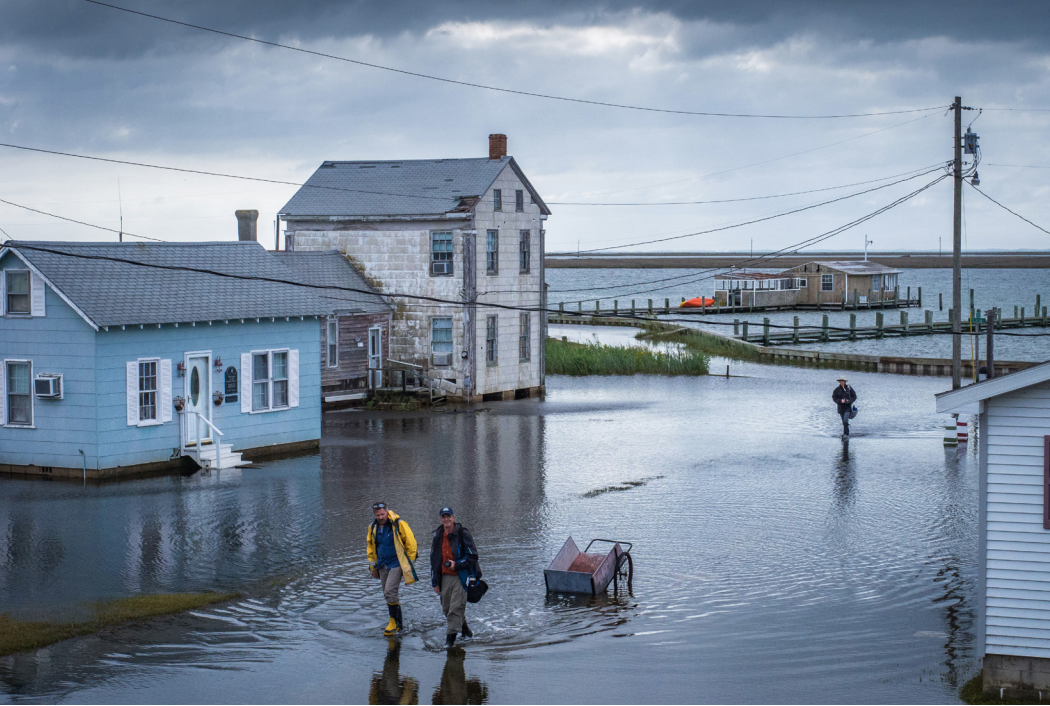The newest projections for sea level rise foresee an average one-foot increase around the U.S. coastline by 2050 — equivalent to the increase in the past 100 years, in just 30 years.
That will cause moderate tidal flooding that occurs 10 times as often as it does now, according to the federal multiagency 2022 Sea Level Rise Technical Report released by the National Oceanic and Atmospheric Administration on Feb. 15.
(https://oceanservice.noaa.gov/hazards/sealevelrise/sealevelrise-tech-report.html)
NOAA Administrator Rick Spinrad said that the average one-foot rise by 2050 is basically baked into the future, given ongoing climate trends. While it is critical to reduce carbon emissions that warm the atmosphere, coastal communities must prepare for the looming consequences now, NOAA officials said.
“We will find a way to adapt and mitigate as we go forward,” and the report is a first step for that complex planning, said William Sweet of NOAA’s National Ocean Service, one of the report’s authors.
The regional impacts will vary, dependent not only on tides and local sea conditions, but geological trends along the coasts. Where land is subsiding on the Atlantic and Gulf of Mexico coasts, sea level change will have much bigger effects compared to the Pacific states. Small shifts in the path and speed of the Gulf Stream’s flow off the East Coast could already be contributing to more high-tide flooding in Charleston, S.C., and other Southeast coastal communities, researchers have reported.
Louisiana is one hot spot, where land already “is disappearing before people’s eyes” with combined sea level rise, land erosion and subsidence, said Sweet.
The East Coast is looking at 10 to 14 inches of sea level rise, and the Gulf of Mexico coast 14 to 18 inches. After hurricane events like Sandy’s 2012 left hook into the Mid-Atlantic coast, and Ida’s bulldozing of southern Louisiana last year, maritime businesses can’t afford to ignore future hazards.
“By 2050, moderate flooding — which is typically disruptive and damaging by today’s weather, sea level and infrastructure standards — is expected to occur more than 10 times as often as it does today,” said Nicole LeBoeuf, director, National Ocean Service. “These numbers mean a change from a single event every two to five years to multiple events each year, in some places.”
One good tool for business planning is the NOAA Sea Level Rise Viewer at https://coast.noaa.gov/slr/ where users can use their local ZIP code to call up tidal flood prediction maps for their communities and zoom down to see detail at the neighborhood level.
The sea level rise report with its 2050 predictions puts out a timeline for the fate of already threatened, low-lying coastal communities.
“This latest report on sea level rise provides an urgent call for action to protect Louisiana’s coast and communities,” said Simone Maloz, campaign director for the group Restore the Mississippi River Delta. “Louisiana’s land loss crisis coupled with more intense hurricanes and sea level rise puts our state and its people in a precarious position. These threats require us to work with all speed and power to protect our communities before the worst effects take hold.”
Updating from the last edition in 2017, the new technical report delves into detailed discussions of how even modest sea level changes can have dramatic effects on once-infrequent flooding.
Only about 0.98' to 2.3' height difference now makes the difference between “infrequent, moderate/typically damaging and major/often-destructive high tide flooding from minor/disruptive ‘nuisance’ high tide flooding, whose impacts are already remarkable throughout dozens of densely populated coastal cities,” according to the NOAA summary.
“For example, the trends in minor/disruptive high tide flooding have grown from about five days in 2000 to 10-15 days in New York City and Norfolk, Va., in 2020; in Miami and Charleston, S.C., annual frequencies have grown from zero to two days to about five to 10 days over the same period. These increases “will continue, further accelerate, and spread to more locations over the next couple of decades,” the report says.
Sea level rise is going to affect the entire U.S. economy, said LeBoeuf. “Forty percent of the U.S. population lives within 60 miles of the coastline,” and the economy is dependent on ports where operations will be seriously affected by more frequent high water.




